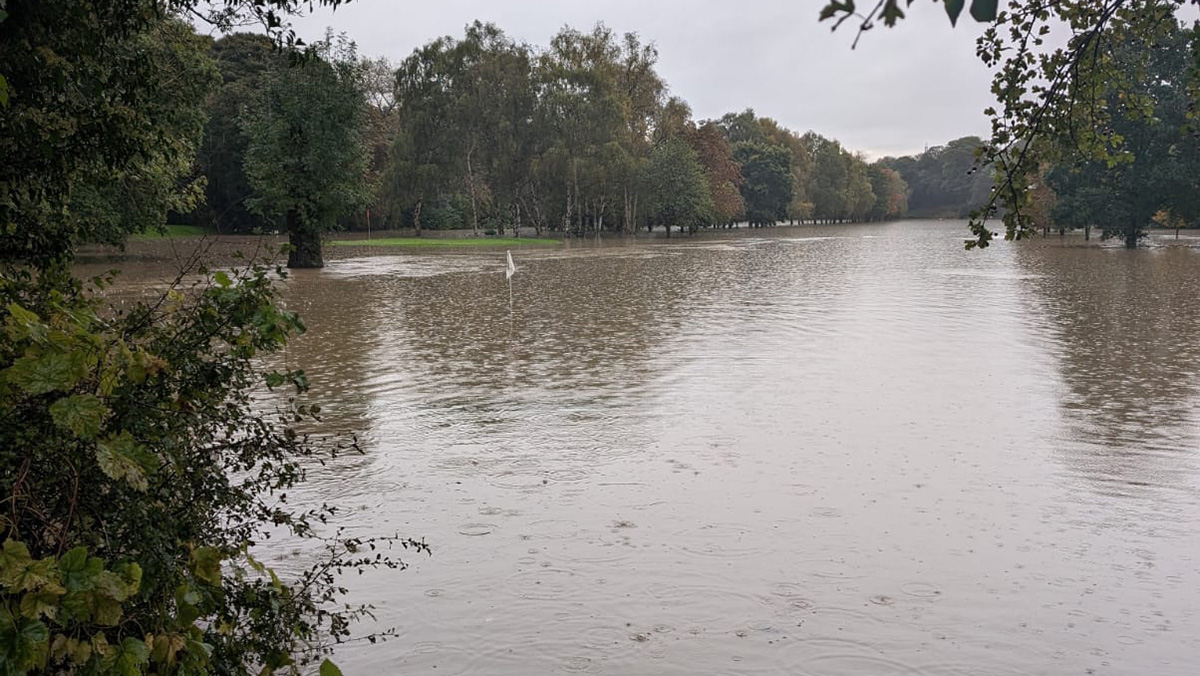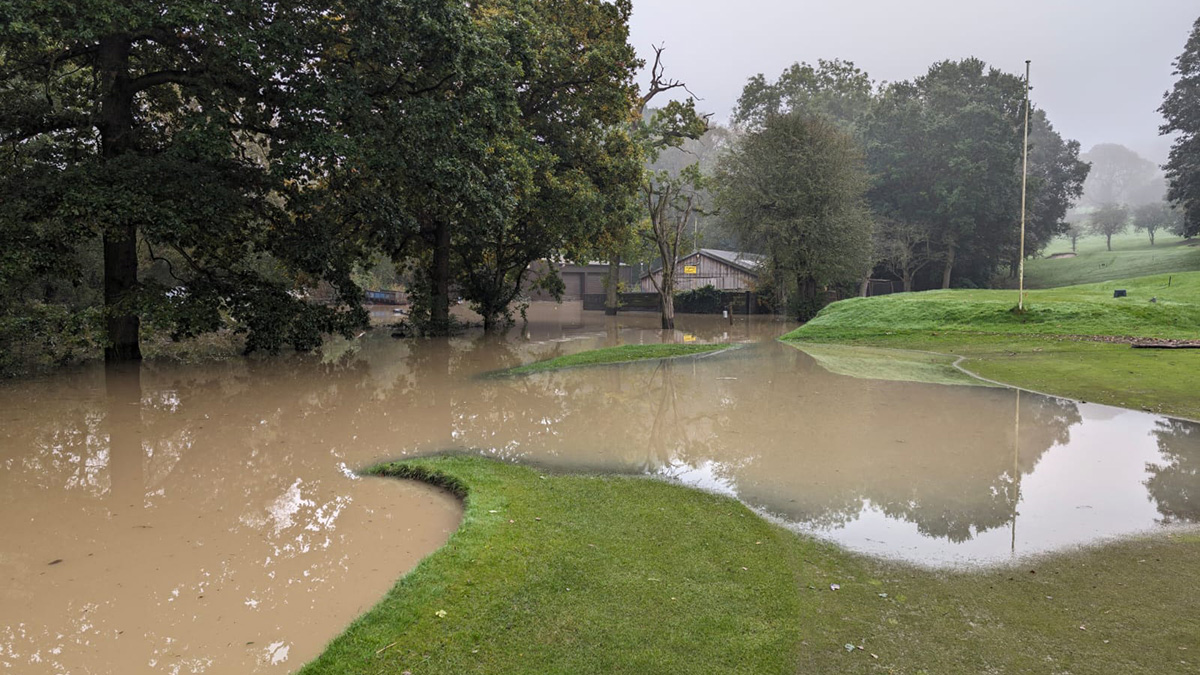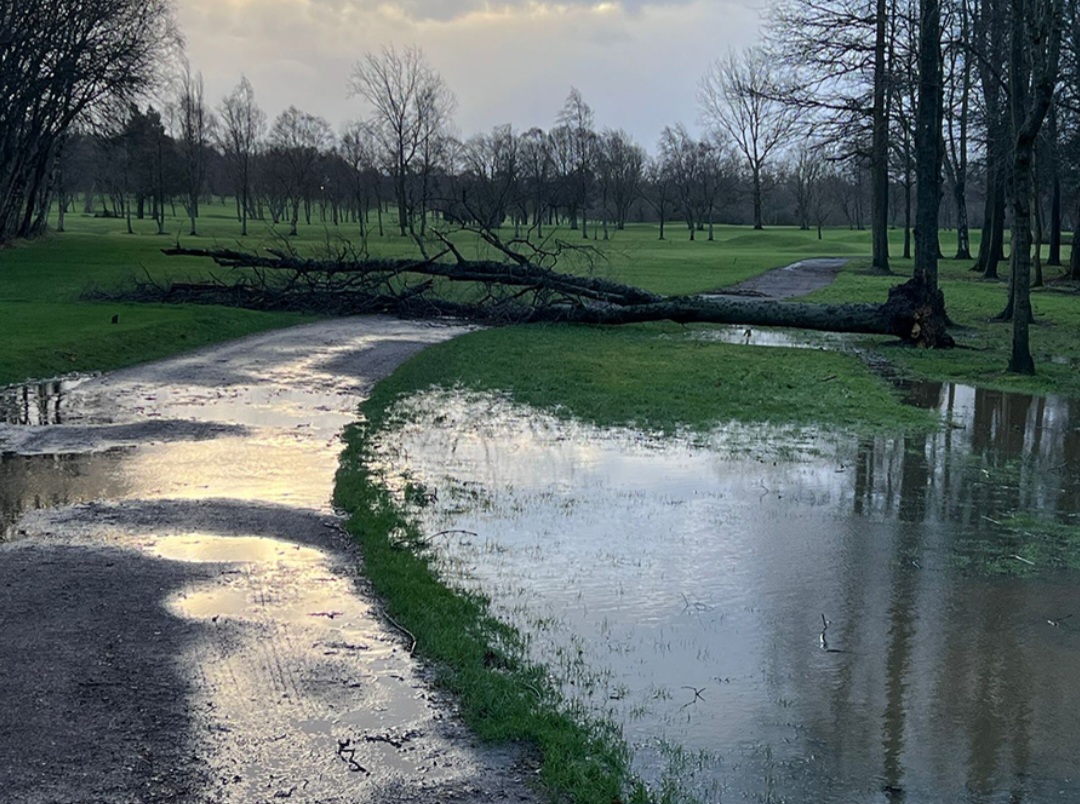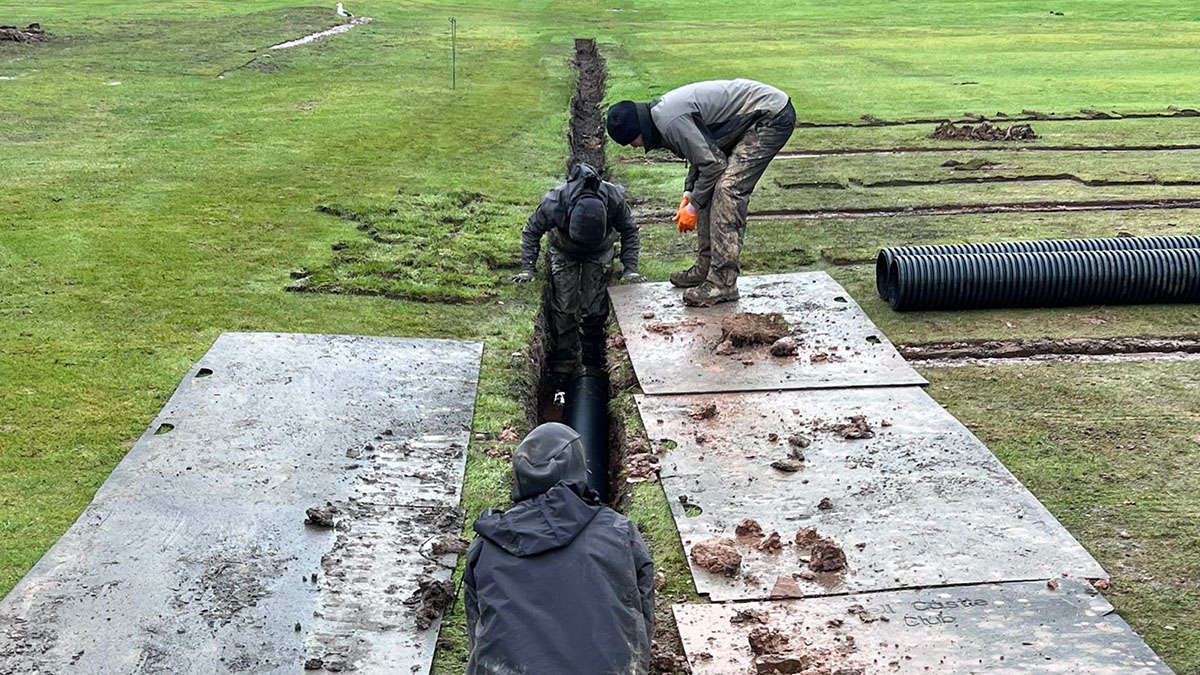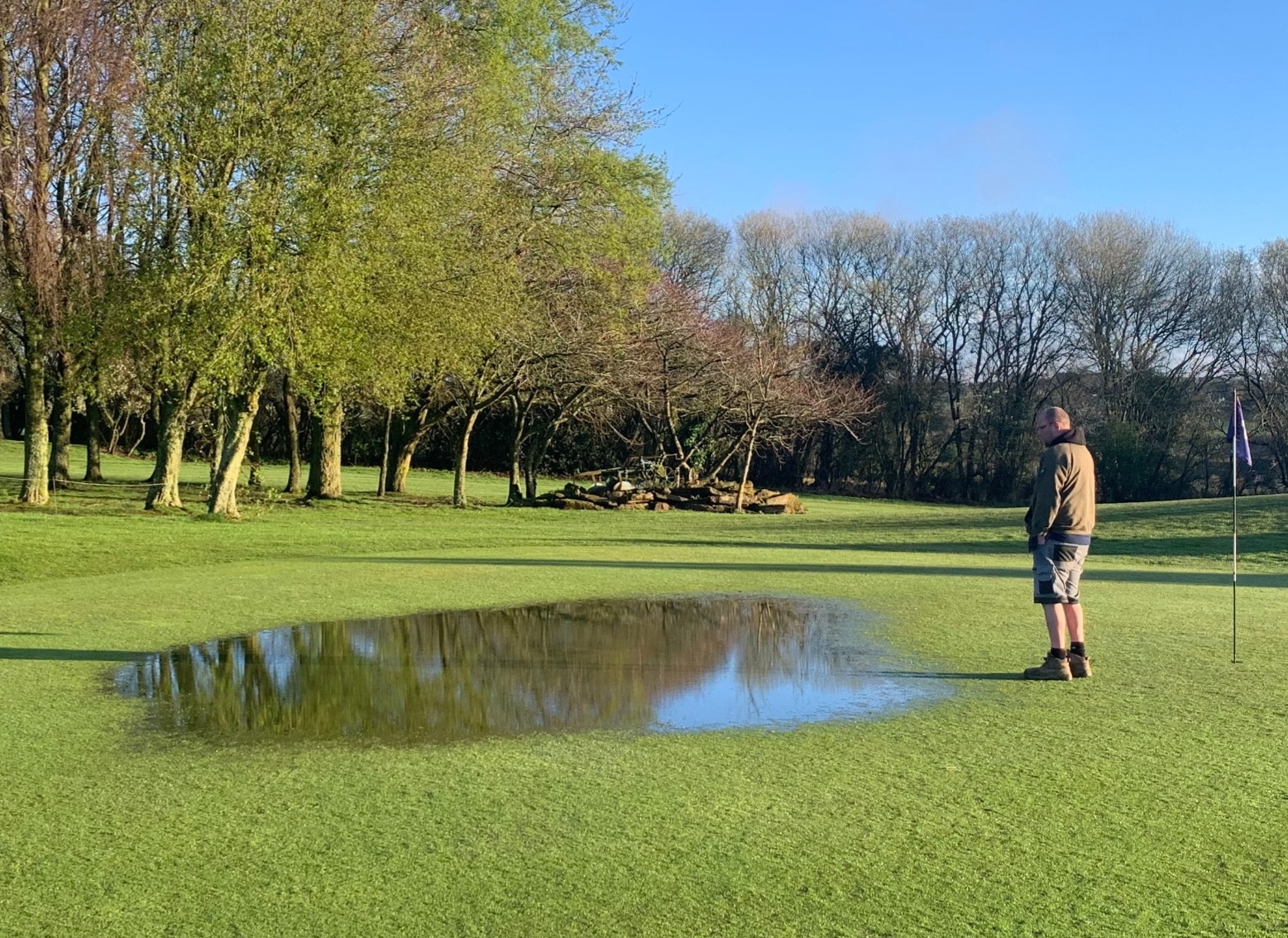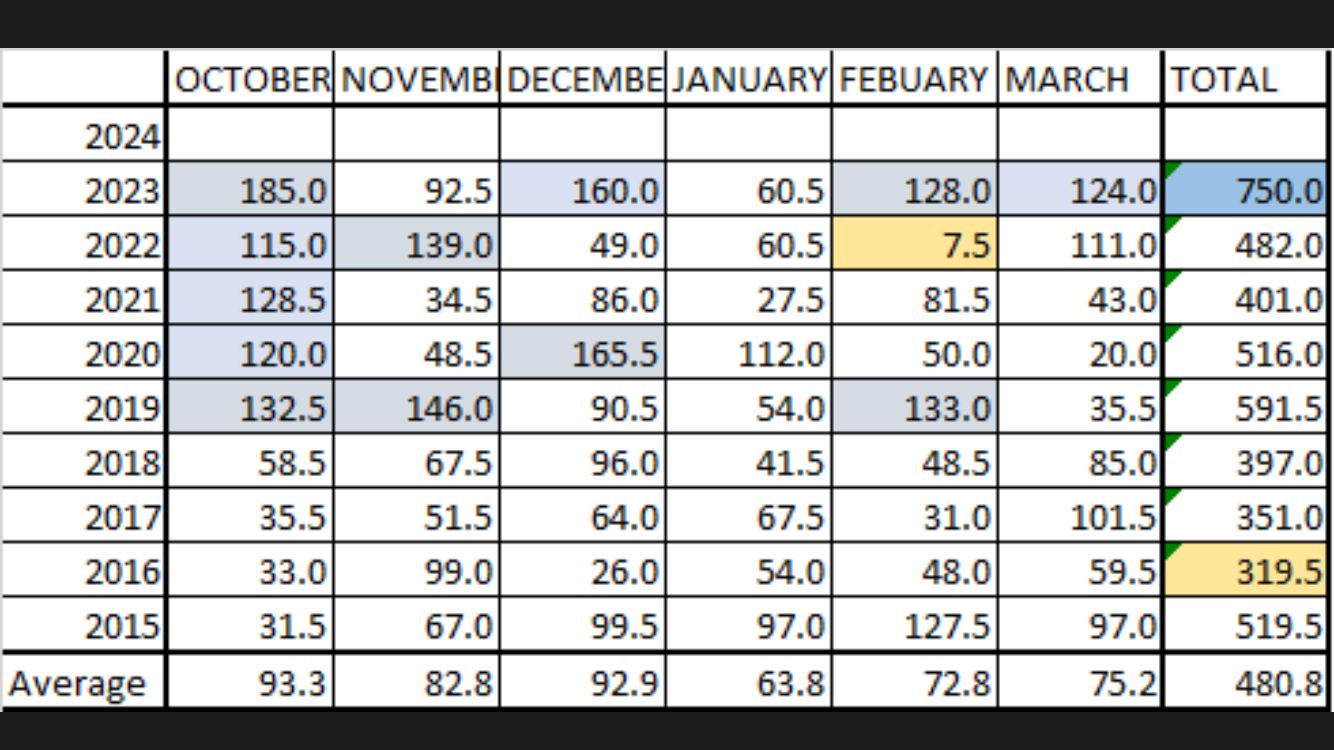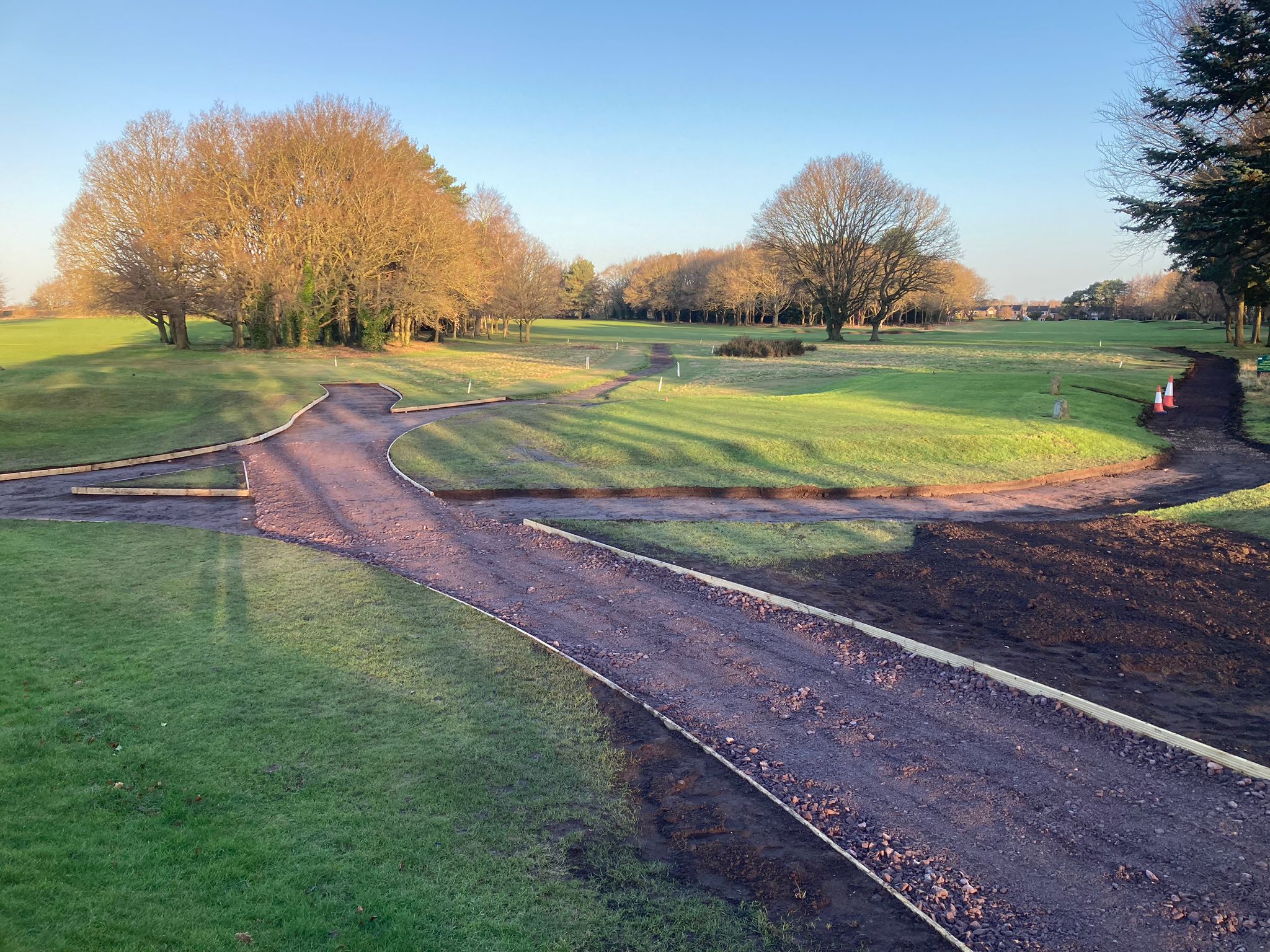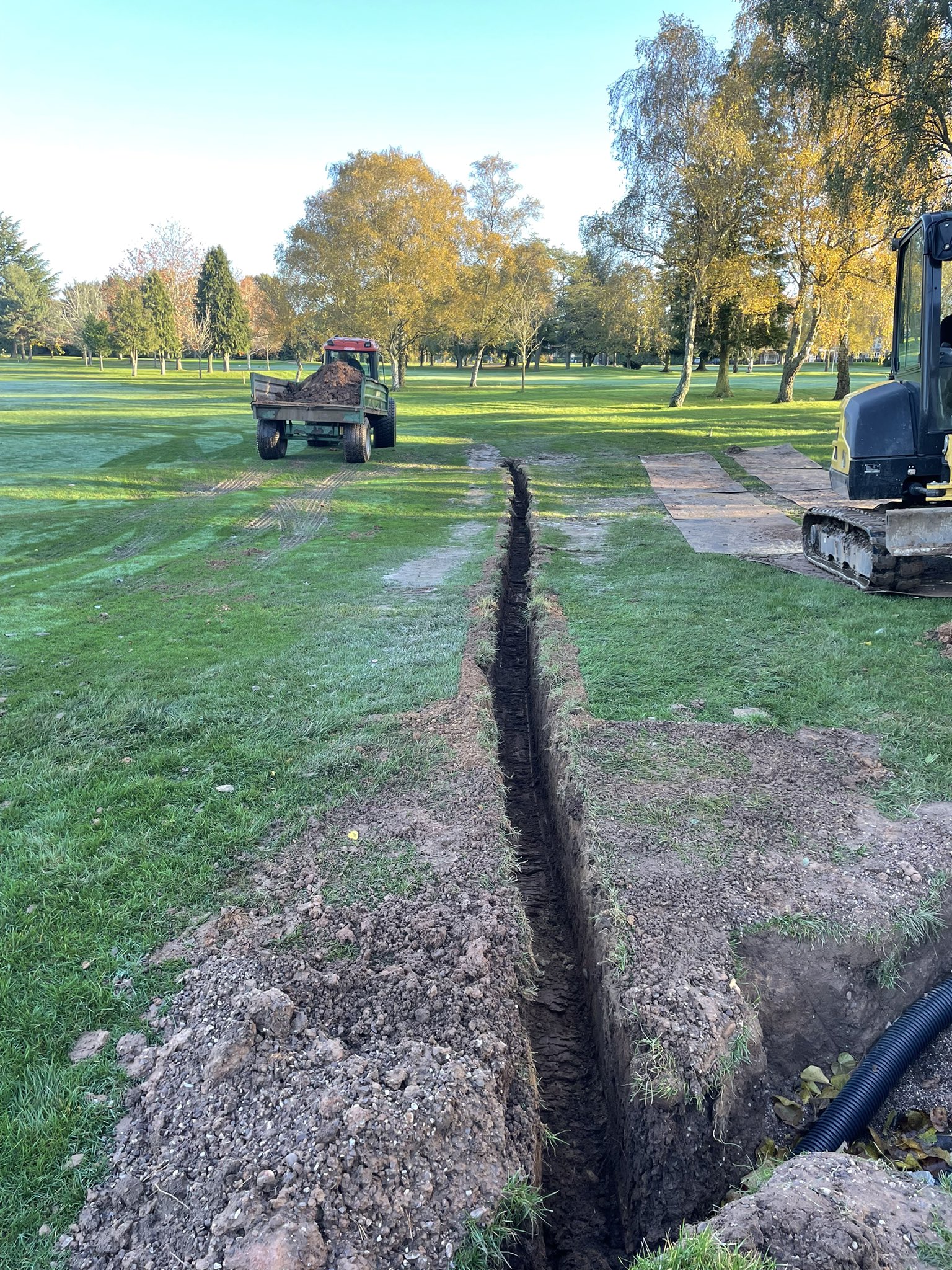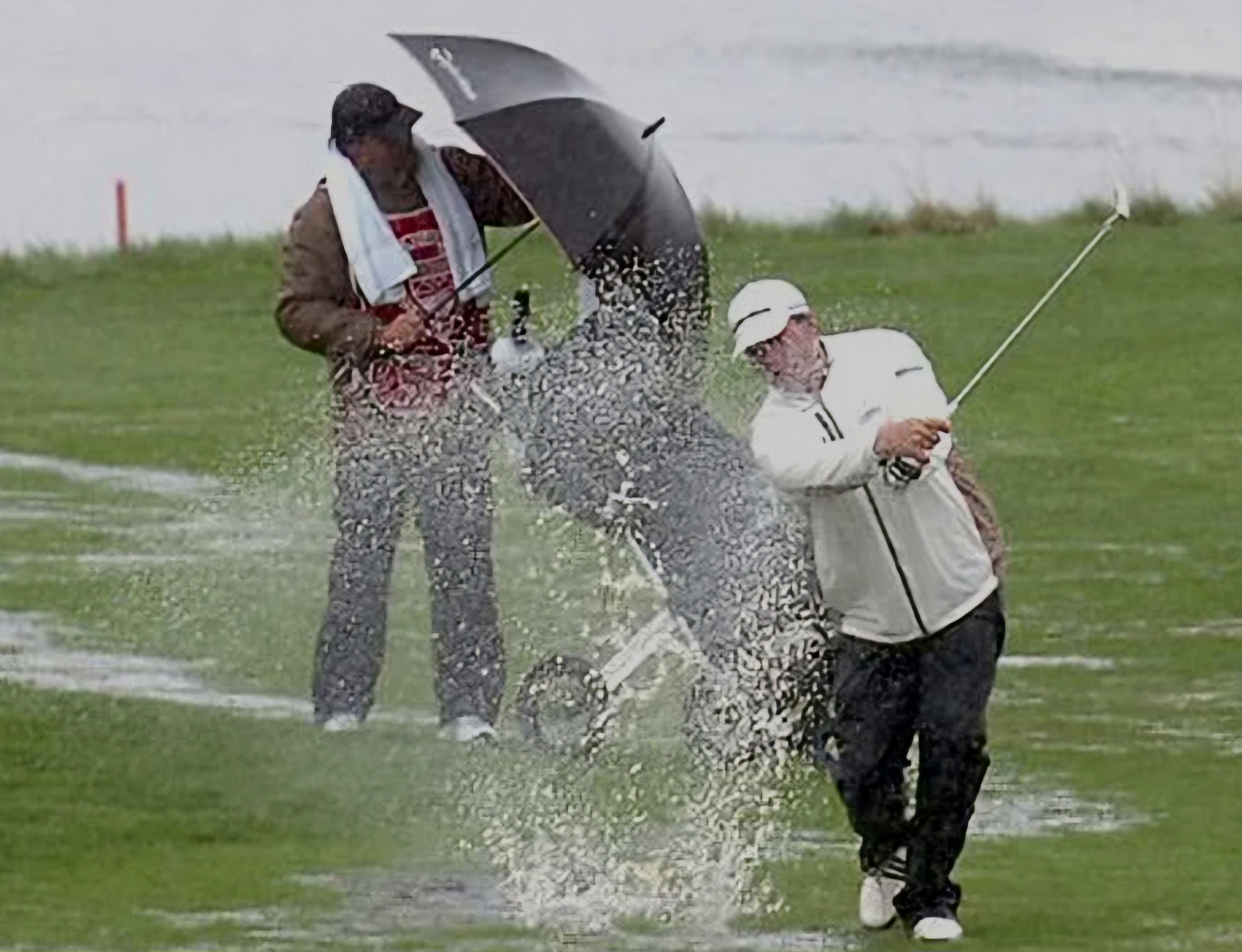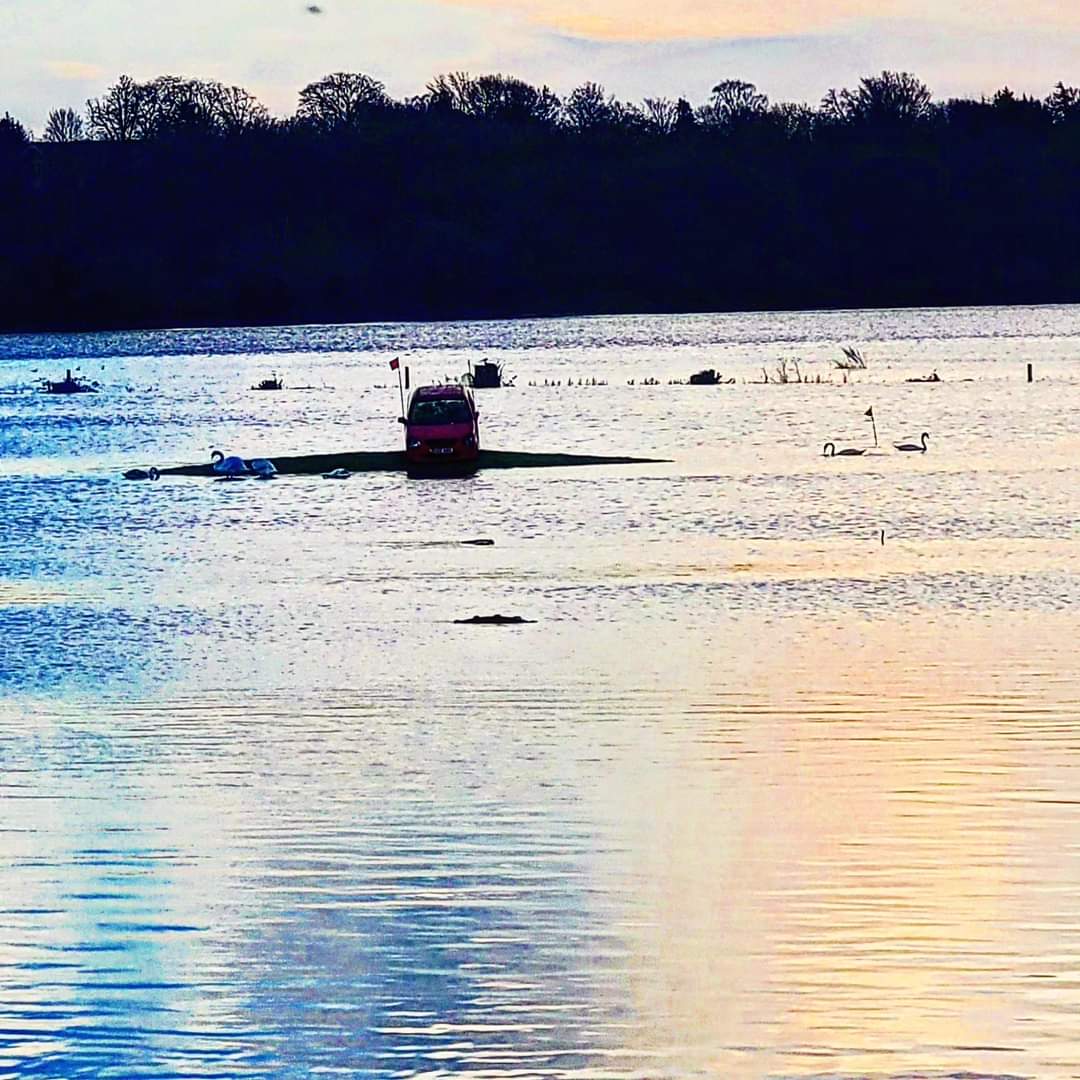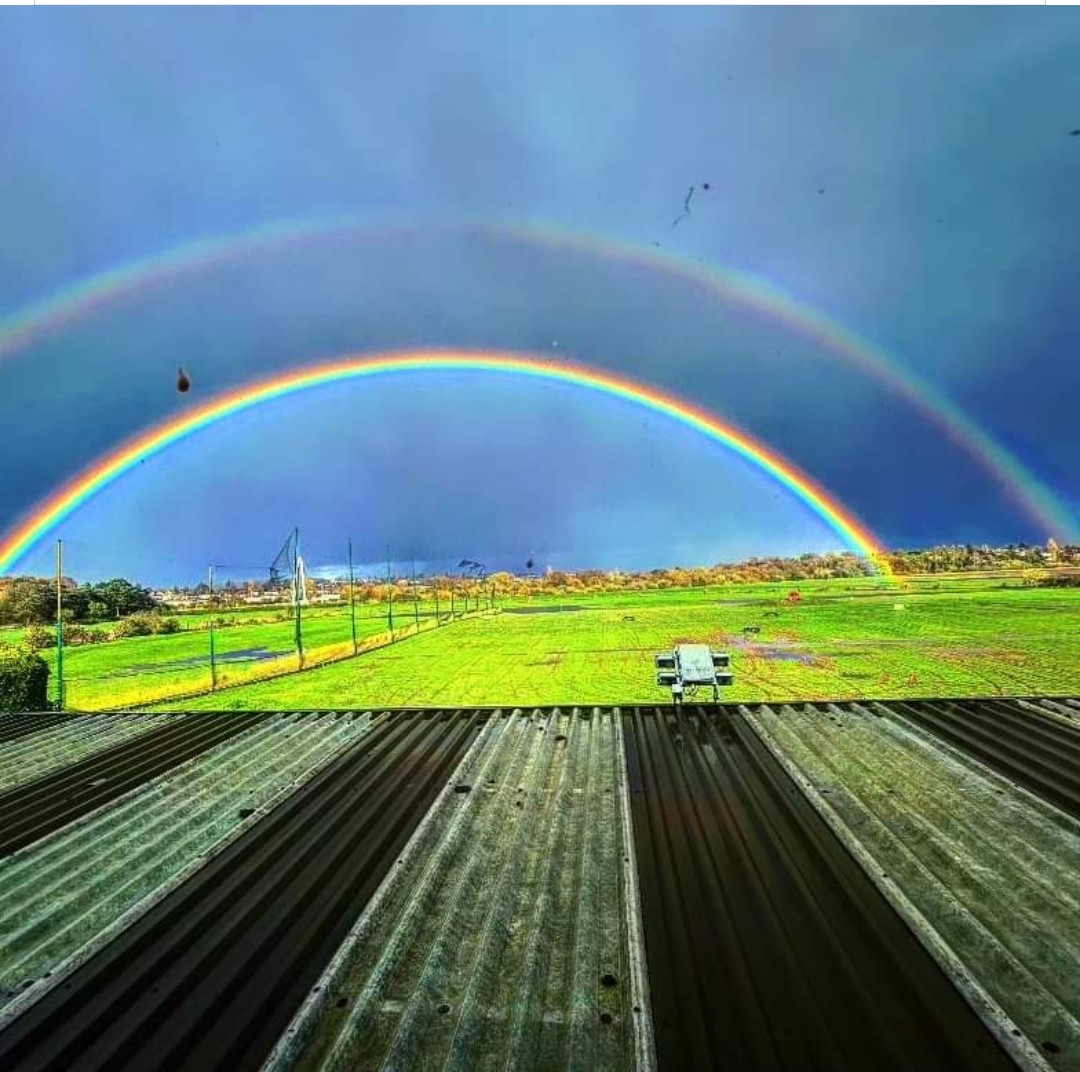There was a golf course under there somewhere.
December 2023, the two pictures below show the devastation of constant rain and flooding over at Renishaw Park GC in Sheffield. It was far from their first such occurrence but sadly it was to be their last. Renishaw Park Golf Club closed for good soon after, no longer able to carry the cost of repairing the damage.
It’s not motorbikes churning up courses, or arsonists setting fire to clubhouses, this is Mother Nature at work, the winter of 2023/24 has set new records for rainfall and disruption across the golf industry. Although there have been no Renishaw Parks in the Midlands as yet, our golf clubs have had to count the cost of weeks/months of inactivity, winter plans changed, shortened hours for the catering and pro shop staff.
Not to mention the cost mentally to the greenkeeping teams out there in all weathers, patching up the rain damage, improving drainage where they can and attempting to maintain some sort of playability.
By and large, the original feature was written for MG with the kind permission of Karl Hansell, BIGGA’s Head of Communications, with words added by Paul Woodham, the R&A’s Head of Sustainable Agronomy in Europe.
We had such a reaction from it when we shared it out on our social media, we took it further and gathered Midlands based industry opinions and experiences, making it into a three page feature in issue 98 of Midlands Golfer, out now. Here is the online version.
Karl Hansell starts off the contributions here with his thoughts from the greenkeeping industry as a whole.
“It has been a long, wet winter across the UK and there are plenty of golf greenkeepers who are pretty fed up. Hopefully their golf club has provided them with the facilities to dry off, enjoy a hot meal and warm drink and recuperate after their hard work out in inclement weather.
Heavy rainfall events are becoming more common and next year could be just as wet as the one we just experienced. But just as likely is the winter of 2025 being as dry as February 2023 (the driest on record) was.
How then can golf courses adapt to this new world? Continued capital investment in course infrastructure is vital. Irrigation or drainage systems installed 30 to 40 years ago with limited record-keeping since will not be adequate to cope with the climatic challenges ahead. A comprehensive audit that feeds into a long-term plan will help provide the canvas that enables the greenkeeping team to work to the best of their abilities.”
It has been estimated that heavy rainfall events now occur four times more often than they did before humans warmed the planet. These downpours raise the water table and consistent wet weather afterwards keeps it topped up, keeping golf courses wet and muddy and preventing greenkeepers from doing regular maintenance. A warmer, wetter climate also leads to increased disease incidence on turf, adding further challenges.
We’re permanently indebted to our local greenkeeping community for cracking on with their work in the worst of weathers, often the subjects of unfair criticism when closing the courses, or parts of them. We spoke to four local Head GKs, beginning with a summing up piece by Sapey G&CC course manager, Matt Lewis.
“It really does feel like we as course managers are fighting a war of attrition with mother nature, but the 2023/24 winter will forever be ingrained in our memories.
In July 2023, we had just come off of a very hot and dry June and historically July and August tend to be your slow growth months, with little rainfall and no grass seeding. July 2023 saw an alarming amount of rain with Sapey recording 124mm for the month and then the rain stayed persistent for the remainder of the year with 668mm falling from the 1st of July up until the 31st of December.
It’s very demoralising for greenkeepers to arrive to work each day and be faced with rainfall which has been literally every other day.
When you factor in the higher-than-average temperatures, it has left golf courses across the country struggling with saturated ground and growing grass which is hard to manage if you are a clay loam course like ourselves. We have aerated as much as possible to help move water through the profile.
Course drainage is always an issue at most clubs and when you are struggling to get facilities open due to wet weather it’s hard to generate the revenue needed to carry out those essential works.”
Alongside the wet weather threatened courses which make up the majority, there are also those in the area that are more fortunate, the free-draining layouts such as Stourbridge Golf Club. But that advantage can also lead to issues too as their Head GK Steven Harvey, (who also sent us their rainfall stats in the picture) related to us.
“The impact we struggle with is we’re open when many others nearby are shut or reduced. So we’re in danger of being over-played during inclement weather, resulting in a plan of investment in pathways of high traffic areas never seen before. We’ve also re-laid some winter tees this year (also pictured) and got them in use which was previously frowned upon but has now been embraced by the majority of the membership.”
Drainage systems on golf courses are often outdated and no longer fit for purpose. That’s why a major job for greenkeepers during periods of heavy weather is digging out channels, clearing them of debris and ensuring water can flow away, off the course. It’s mucky work – and there are few people around to witness it – but someone has to do it.
Dave Collins at Lickey Hills references as many did, drainage issues which are all the more evident when times are like these.
“I think it’s about all of us getting the clubs/companies we work for to prepare for this scenario every year as if it is the new norm. If it turns out drier then that’s a bonus. Many courses, including the Lickeys are over 100 years old and still relying on the original drainage systems put in place then. In a lot of cases they can’t cope with seasons like these and just fixing issues when they arise isn’t a long-term solution. It’s about replacement and maybe more ditch lines too, then there’s the maintenance and time to keep them clean each year.”
A similar scenario for Ian Davies, the new Course Manager at the nine-hole Stone GC in Staffordshire.
“I started at the beginning of autumn ’23, in one way the very wet weather has helped as it has highlighted the drainage issues and how the waterflow can be better managed with ditches etc. It has pushed the need for investment in such work to help with future winters to keep the course open more. Being a nine-hole, I don’t have the luxury of offering a reduced course, so planning ahead for more extreme weather is even more important.”
So what impact does it go on to have inside the golf clubs with the decision makers? There’s no doubting that serious issues are raised when we’ve endured an outdoor season such as this. There is clearly clamour in the greenkeeping fraternity for extra investment towards modernised drainage systems, but are the clubs going to be able to budget for it when income has taken such a hit? There are further issues too of course, member frustration and how that might manifest itself going into the traditional renewal season and competitions, does that season now need to begin a little later?
Pictured from L to R. Alec Fernihough is the owner/GM of Gaudet Luce Golf Club in Droitwich, Adrian Bamborough is Director of Golf at Walsall’s Calderfields G&CC and Anthony Haste has just taken on the same role over in Derby at Horsley Lodge.
AF “This winter’s wet weather has meant that we have all had to deal with frustration with either closed courses or poor weather meaning fewer golfers, so it naturally results in less income for golf clubs. Also, secondary spending in shops and clubhouses is impacted as well as the more obvious loss of green fee and buggy revenue. In monetary terms the impact has been around £100k in lost income over the past six to 12 months of wet weather.”
AB “We have had to cut back on shop hours, part time staffing hours in the clubhouse. Except for loyal members, if no event is on then no golfers are there to spend in the clubhouse or shop.”
AH “It’s incredibly frustrating for a club member and we understand that, but we have to stand firm on this and ride it out. Everyone thinks the grass is always greener over there don’t they and it’s just not the case. We’re all in the same boat. I sometimes wish I could get people in a coach and drive them 50 miles up the road and say, look it’s just as bad here. The large majority of members appreciate it, but others are a little blinkered and we just have to explain it all as best we can.”
AF “Everyone is frustrated, the greenkeeping team are sick of hand collecting 1000s of balls on the range that they know are going to get hit back out, golfers are fed up with getting wet and muddy. Despite this, most golfers understand that there isn’t a lot you can do with the weather.
MEMBERSHIP OPTIONS
AB “We have had a good chunk of members look to go to a flexi membership instead of full due to the wet winter and lack of golf. Our renewals are in April and although early paying incentives are in place, 60% of the membership are hanging on until the last minute due to weather and the uncertainly of it all.
AF “Over the past ten years we have introduced several different membership options and at times like this it allows members a choice so that they can decide which type of membership gives them value. We have seen lots of interest in our 8-month membership from outside in the past couple of weeks. Many current members have made use of this, getting to October, and deciding if they want to play in the winter or not. Those who decided not to were definite winners this year.”
AB “We offer the flexi membership which suits members who don’t play that often and if they don’t play then they lose nothing. However, if they play once a week or more then this option costs them more.
ADJUSTING THE COMPETITION SEASON
AH “We don’t actually have to jump on it straight away and get out on the whites, off the yellows it’s still a measured course, it’s all about fun after all and golfers want to have a chance to score well. If fairways are still soft in May and June and there’s no run on them that makes it such a tough slog for everyone, why not run them off the yellows. Maybe April should just be a warm-up competition month and then hopefully from May to September we’re all back to normal.”
AB “Our aim is to convince the committee to do this, less qualifying comps and play a shorted non qualifying course in winter with roll up casual comps.
AF “The last wet winter was in 2019/20 and just as it stopped raining in March, we went into lockdown so as a team we had 2 months of really good weather to get the course back into shape before golf re-opened. This year will be different because we will be working on the course while golfers will be out, so some patience will be needed before courses get back to the way they should be, even those which have been closed to protect the course will not become like Augusta overnight.
“The future looks interesting with capital needing to be spent on both drainage for wetter winters and for water storage if summers become hotter and drier. The trick will be to deal with this extra investment whilst making sure that you can still make a round of golf good value.”
Finally, we’re back with Karl, BIGGA for an industry summing up.
“It seems cliched to say and yet we hear how often it is overlooked – but the golf course is a golf club’s biggest asset. Without a golf course, there is no club, and yet how often do we hear of clubs replacing the lockers in the changing rooms or laying down fresh carpet in the clubhouse? Yet out on the course, things are neglected. Greenkeepers can undoubtedly play their part in that by improving channels of communication and developing the ability to present their case in a professional, positive manner, but we also hope that golf club managers and members become more eager to speak to their greenkeepers and listen to their concerns and perspectives.
It’s fascinating to read some of the stories in the article. It’s clear that this winter has been a struggle for so many. The changing climate will throw more extreme weather at us and it will impact the availability of resources that greenkeepers traditionally use to maintain the course. Only by working together will the golf industry be able to overcome the challenges of the coming years.”

Finally, thanks to Worcester Golf Range for the final two images here. A place that suffers badly when the River Severn gets high. The first is on New Year’s Day, there’s target golf for you! The second, from more or less the same spot is March 30th – rainbows of hope for a nice sunny summer ahead?
THANKS TO ALL OF THE CONTRIBUTORS TO THIS ARTICLE WHICH APPEARS IN ISSUE 98 OF THE MAGAZINE, TOO, OUT NOW. IF ANYONE WISHES TO ADD FURTHER COMMENTS WE CAN INCLUDE THEM AS WELL – PLEASE GET IN TOUCH WITH THE EDITOR PHIL.


